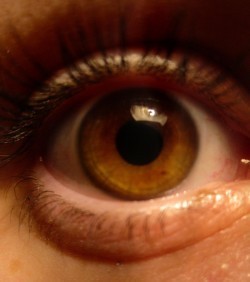The Second Method to Developing Persistence

The first method to developing persistence is described here.
The next tool is a vision board. A vision board is literally any type of board on which you display images that represent whatever you want to be, do, or have in your life.
Humans think in images. Whenever you recall a memory, concept, idea, or event, the accompanying pictures automatically materialize in your mind. By referring to your vision board, you reverse this association. You induce your mind to contemplate concepts and ideas by observing the pictures connoted with them.
To create one, you just need a bunch of pictures which associate with a specific goal. In comparison to the personal mission statement, a big asset of a vision board is that it’s easy to use―just place it in a visible spot where you are sure to look a few times a day. For example, you can place it on your closet door―every time you dress, you’ll look at your vision board and be reminded about your goal.
Dreams
This word conveys three meanings which are interconnected:
a series of thoughts, visions, or feelings that happen during sleep
an idea or vision that is created in your imagination and is not real
something that you have wanted very much to do, be, or have for a long time
From these meanings, I want to highlight that they involve thoughts, visions, and feelings, which all happen only in your mind.
The problem with dreams is that they come true. It annoys materialists beyond imagination (pun intended). For me, the second meaning should be modified to “vision in imagination that is not yet real.”
Dreams employ images and are better than a vision board―you can always carry images from dreams with you. You can visualize in practically any moment and any situation. When I was fighting my shyness of strangers, I visualized during my commute to work during rush hour, in crowded buses and trains. You can sit and meditate upon your dream in peace and quiet in the morning at your apartment or you can recall a picture of your dream when running to the bus stop. Visualization is unbelievably flexible. However, the vision board, especially when strategically placed in a highly visible place, has one advantage over visualizations. You spend almost zero energy using it. The board just happens to appear in your sight and you are instantly reminded about your goal.
Effort
Unfortunately, visualizations require a bit more effort on your part. You have to remember to do them and you must actually do them. Wallace D. Wattles, one of the fathers of Law of Attraction and the author of “Science of Getting Rich,” wrote that
There is no labor from which most people shrink as they do from that of sustained and consecutive thought. It is the hardest work in the world.
I completely agree with him and I think it’s the main explanation behind the less-than-advertised effectiveness of LoA in the real world.
Emotions
Dreams stir strong emotions. They can act as your turbo boost whenever you feel low. And that combines with visualization perfectly. The more emotions attached to the pictures in your mind, the less likely you will forget about them. If you remember a task or habit, a good chunk of the battle has been won. Now you just need to perform it.
However, emotions can be a two-edged sword. If you passionately want something, let’s say a great body, when you fail to act in accordance with your vision (you eat burger instead of salad), you are also more likely to beat yourself up. A single misstep can cause a much stronger and more negative emotional reaction on your part than it really deserves.
High Performance
And there is another problem with dreams and visualizations. They are “coo-coo.” Only lunatics do such things and it is below your dignity, right?
Well, not exactly. When I was doing research for my book “From Shy to Hi ,” guess what Google spit out when I typed in “self-talk?” The stories and research about top sport performers. While common folks focus on training methods and intervals, the equipment and other material factors, top performers focus on what’s happening in their minds.
,” guess what Google spit out when I typed in “self-talk?” The stories and research about top sport performers. While common folks focus on training methods and intervals, the equipment and other material factors, top performers focus on what’s happening in their minds.
Of course I don’t encourage you to lay on your back and dream about the bright future, when you will be consistent like a machine. Doing things get things done. But if you want top-level consistency, you should use the techniques practiced by top performers. Dream.
When asked about my consistency I initially wrote a blog post. My friend kept asking me questions about my grit, so I wrote a whole book about developing consistency, “The Art of Persistence”. It will be published in a few weeks.
If you are interested in growing your willpower, persisting when the things get tough and pursuing the mundane, but fireproof path to success sign up to the dedicated mailing list below:
You will get sneak peaks into the book and I’ll send you a notification at the moment of “The Art of Persistence” (FREE!) launch.
The post The Second Method to Developing Persistence appeared first on ExpandBeyondYourself.



